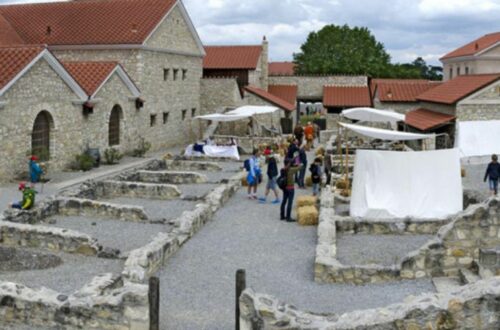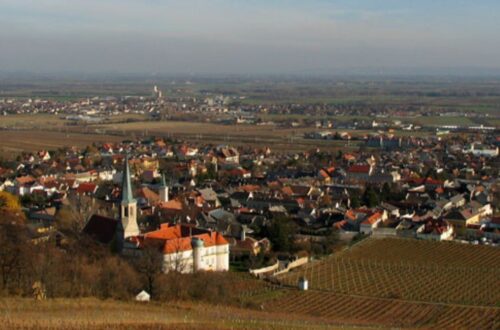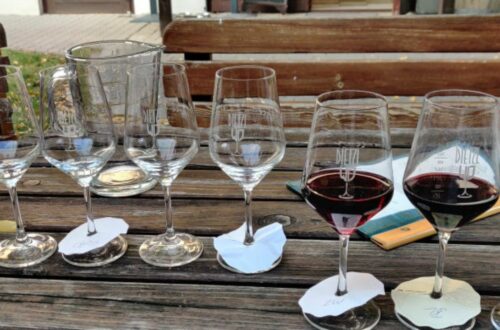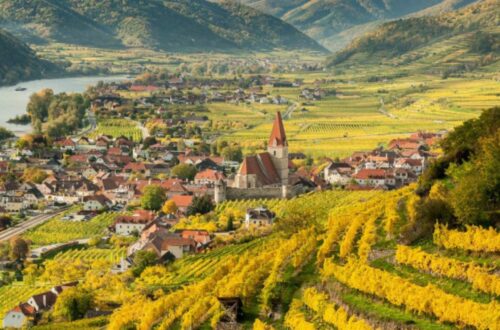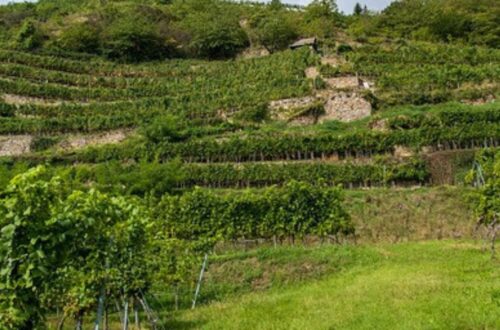Learn to drink beyond Bordeaux
From Austria’s celebrated Grüner Veltliner to Japan’s intriguing varieties, you’ll find detailed guides, insider tips, and my top picks for each country. It’s all about broadening your wine horizons and finding those special bottles that are off the beaten path.
Curious about what’s next? Stay tuned as I add more exciting wine regions and discoveries. Whether you’re planning your next wine journey or just looking to try wine beyond Bordeaux, this is your one-stop shop for exploring the world of wine!
Cheers to new discoveries and expanding your wine world!
-
Eisenberg wines
The Burgenland region has a diverse range of wine styles, with a particular focus on exceptional sweet wines produced around the lake. This is due to the presence of shallow water, autumn mists, and noble rot, creating favorable conditions for these unique wines. However, the slopes of Leithaberg, Eisenberg, and Mittelburgenland, characterized by limestone, clay, and schist soils, offer excellent…
-
Mittelburgenland wines
The Burgenland region has a rich assortment of wine styles, with a notable emphasis on producing extraordinary sweet wines in the vicinity of the lake. This is attributed to the shallow waters, autumnal mists, and the presence of noble rot, all of which create ideal conditions for these distinctive wines. Nonetheless, the slopes of Leithaberg, Eisenberg, and Mittelburgenland, characterized by…
-
Neusiedlersee wines
The terroir of Burgenland in Austria offers a diverse range of wine styles. The region is known for its exceptional sweet wines produced around the lake Neusiedlersee, thanks to the shallow water, autumn mists, and noble rot. The Seewinkel area benefits from a special microclimate and is renowned for its sweet wines, particularly Welschriesling. The introduction of the DAC (Districtus…
-
Leithaberg wines
The wine styles in Burgenland are diverse from red wine to which exceptional sweet wines. This is mainly due to Burgenland’s terroir. For instance, the sweet wines are produced around the lake due to factors like shallow water, autumn mists, and noble rot.. However, the slopes of Leithaberg, Eisenberg, and Mittelburgenland, with their limestone, clay, and schist soils which provide…
-
Burgenland wines
Burgenland is one of the four main Austrian wine areas. The main reputation of Austria lies in the exceptional quality of its dry white wines, made from the indigenous Grüner Veltliner and Riesling grapes. However, Austria also produces a wide array of excellent red wines using local grape varieties like Zweigelt and Blaufränkisch. Furthermore, Austria is recognized for its botrytized…
-
Carnuntum wines
Carnuntum has a rich history dating back to the Roman period. So let’s delve into that first. It first became significant during the early Julio-Claudian era when it was chosen as a defensive sector and home to Rome’s 15th Legion due to its strategic location along the Danube. Emperor Claudius recognized its potential and established a military camp capable of…
-
Thermenregion wine
The Thermenregion wines’ history goes back the Middle Ages. Notable designations of origin such as Gumpoldskirchen for white wines and Vöslau for red wines rime with exceptional quality. A significant turning point occurred in 1985 with the introduction of the new Austrian wine law, ushering in a new era for the region. Gumpoldskirchen and Bad Vöslau merged together to form…
-
Weinviertel Wine
The Weinviertel became a part of Austria through the Treaty of Teschen in 1778, and vineyards were first established there in 1823. It belongs to the large family of Niederösterreich, ie Lower Austria, and is one of the 8 sub regions, the Wachau being the most famous one. Stretching along a 400 km route, the Weinviertel Wine Road boasts nearly…
-
Traisental wine
Traisental is an Austrian wine region with a rich history spanning over 500 years! The vineyards cover more than 1,500 acres. With over 50 vineyards contributing to the production of over 10 million bottles of wine, Traisental has established itself as a prominent wine-producing area. Visitors to Austria can explore the charming small towns within Traisental, such as Traismauer, which…
-
Wagram wine
The vineyards in this region are separated into two clearly defined zones. The first zone is located north of the Danube, adjacent to the Kamptal region. It is characterized by the expansive “Wagram,” a large terraced land that extends eastward for approximately 30 kilometers. The second zone, situated south of the Danube, encompasses the charming wine villages of the Tulln…








